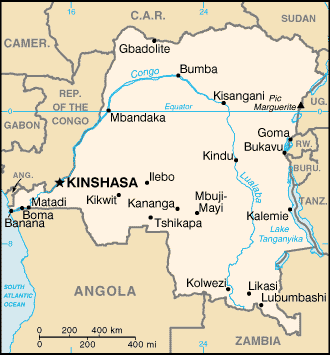The measles outbreak in Katanga province in southern Democratic Republic of the Congo worsens and help and resources are lacking in the battle against the vial outbreak, according to the international medical humanitarian organization Doctors Without Borders/Médecins Sans Frontières (MSF).

Official numbers put the outbreak over the 20,000 people affected, including some 300 deaths and it is spreading. More than 20 of Katanga’s 68 health districts are now affected—up from 10 districts in June, MSF reported Tuesday.
DRC government officials have not declared an officials epidemic, which is likely burdening the response.
During the last three months, MSF vaccinated more than 300,000 children and treated more than 20,000 measles-infected patients in five hospitals and approximately 100 health posts; however, according to Jean-Guy Vataux, MSF head of mission in the Democratic Republic of Congo it is not enough.
“We need more actors in the field”, he said. “MSF remains one of only two organizations in Katanga today involved in treating measles and immunizing children against it.”
In addition, vaccination campaigns also must deal with the geography of Katanga province, which can be difficult, and hard to keep vaccine in temp.
Katanga province is huge, about 16-times the size of Belgium at nearly a half-million square kilometers.
“The vaccine against measles is very effective but it is not well-suited to this type of environment,” said Aurore Taconet, MSF vaccination referent in Paris. “It requires a thorough cold chain that is difficult to maintain in such conditions, and a second booster dose at least one month after the first. Such constraints mean huge needs in terms of equipment and human resources, and therefore a significant cost. ”
Last week, the US Centers for Disease Control and Prevention (CDC) issued a travel notice for the DRC recommending travelers to the Democratic Republic of the Congo protect themselves by making sure they are vaccinated against measles, particularly infants 6–11 months of age (1 dose of measles vaccine) and children 12 months of age or older (2 doses of measles vaccine), in addition to practicing good hygiene and cleanliness.
Robert Herriman is a microbiologist and the Editor-in-Chief of Outbreak News Today
Follow @bactiman63
Related:


2 thoughts on “DRC: Katanga measles outbreak grows, ‘We need more actors in the field’ MSF exclaims”